Flies
{{start}}
{{end}}
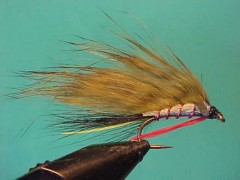
{{+1}}Silver & olive yeti – Chatto’s variant{{-1}}
{{start}}
My standard Yeti variant is a very successful fly but every now and again you need something a bit mor flashy. This fly fills that gap in my fly box. In smaller sizes I prefer my Bag Fly or my Tom Jones.{{end}}
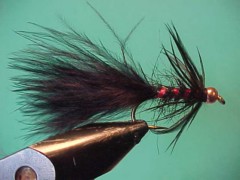
{{+1}}Banded bugger{{-1}}
{{start}}
A similar fly to a Shrek or Bloody Mary this fly is distinguished by the bands of fuzelled seals fur and holographic tinsel along the full length of the body. This is a particularly good point fly early and late in the season when the browns and bows are getting ready to make their spawn run. Brown with red or gold tinsel as well as olive with green tinsel also work well.{{end}}

{{+1}}Bread fly – sinking{{-1}}
{{start}}
All sorts of estuary fish respond to bread berley and will take a sinking bread fly suspended or slowly sinking through the feeding zone.{{end}}

{{+1}}Bread fly – wet{{-1}}
{{start}}
All sorts of estuary fish respond to bread berley and will take a sinking bread fly suspended or slowly sinking through the feeding zone.{{end}}
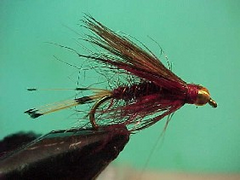
{{+1}}Bead head mallard & claret{{-1}}
{{start}}
A variation on my Soft Winged Bob flies is to turn them into anchor flies for use as the point fly in a team of loch style flies. They are attractive to fish and because of the smaller size and additional weight they sink faster than most flies and keep my leader straight making it easier to keep in contact with my dropper flies. The weigh is a 2mm gold, copper or black tungsten bead (or brass bead and 8 wraps of .015mm lead on the front half of the hook shank).{{end}}
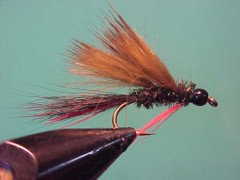
{{+1}}Bead head bag fly{{-1}}
{{start}}
I now tie it in three versions. The first is as set out in the recipe below. Originally designed for red fin feeders it has become my favourite bag fly overall. It has red hackle fibres tied under the tail and as a light beard and over time I found these a great trigger point for all versions. The second version is all brown except for the red beard and is a great alternative to a Diawl Back. Finally I tie a bead head version for when I want to fish a little deeper.{{end}}
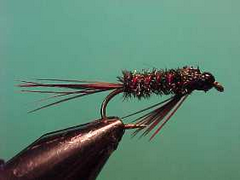
{{+1}}Bead head diawl bach{{-1}}
{{start}}
I tie it both with and without weight and find the addition of a small black tungsten bead makes it a handy anchor fly or a good prospecting fly in running water.{{end}}
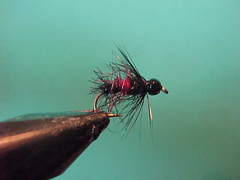
{{+1}}Bead head bibio variant{{-1}}
{{start}}
A bead head version is not a bad idea either. Swap over to a slightly longer hook such as a Tiemco 3769, start with a small black tungsten bead and continue with the recipe below. My version below varies from the original tie in that it doesn't include a body hackle. Instead the body is dubbed with seal fur dubbing which has been teased out in step 'D' with a Velcro rub.{{end}}
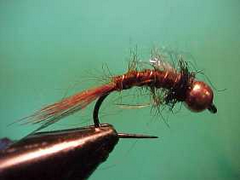
{{+1}}TBH chocolate caddis nymph{{-1}}
{{start}}
Caddis are are common throughout the year but with the greater concentrations occurring from September through to March. They inhabit both running and still water and are a significant food source for most trout often reputed to represent up to 30% of a trout's diet.{{end}}

{{+1}}Tarlington’s Corduliid (aka TC){{-1}}
{{start}}
I have fond memories of this fly from my early days of fly fishing. One of my favourite destinations was 'Frying Pan' which is the closest lake Eucumbene destination to Cooma where the TC was designed by Cooma resident Frank Tarlington. On one of those memorable trips to 'Frying Pan' I was introduced to one of the 'gun' regular fly fishers named Stan. When the mudeyes were on Stan would forgo all other flies and stick to a fly that he absolute confidence in , the TC. I have had a lot of respect for that fly ever since.{{end}}













